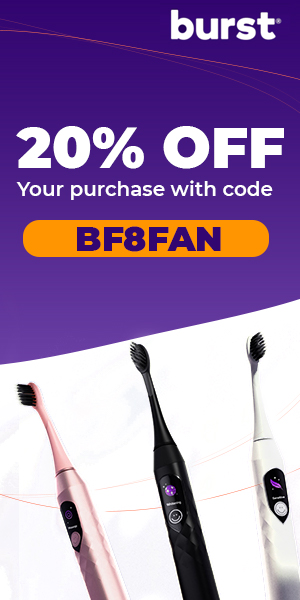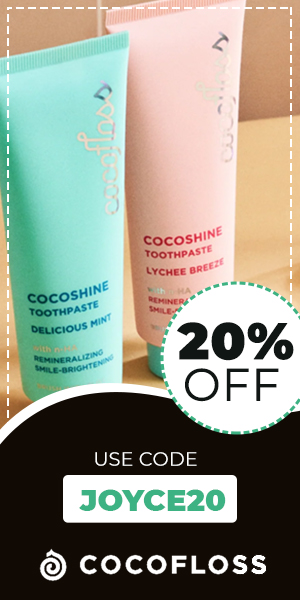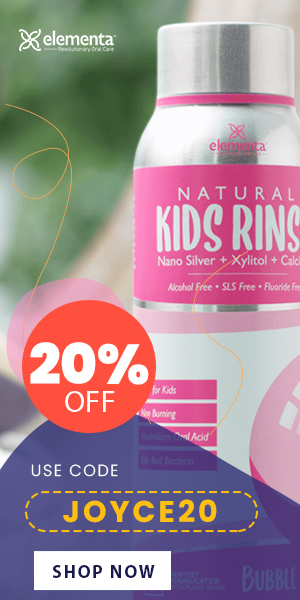When you notice tiny bumps on your lips, it’s natural to wonder what they are and if you should be concerned. These bumps can vary widely in size, appearance, and cause. Here’s a breakdown of the most common types and their causes to help you understand what’s happening.
Overview of Different Types of Bumps
- Pimples: Much like the ones that appear on your face, pimples can form on your lips due to clogged pores from excess oil and dead skin cells.
- Cold Sores: These are fluid-filled blisters caused by the herpes simplex virus. They are usually preceded by itching or tingling and can be painful.
- Fordyce Spots: These are small, painless, pale bumps that naturally occur on the lips. They are simply visible sebaceous glands and are harmless.
Common Causes
- Irritation: Lip irritations can result from harsh weather, spicy foods, or cosmetic products that cause allergic reactions.
- Infections: Viral or bacterial infections can lead to bumps; cold sores are a common example.
- Blocked Pores: Similar to acne on the skin, pores around the lips can become clogged, leading to small pimples.
Normal vs. Abnormal Bumps
- Normal Bumps: Often, lip bumps are painless, small, and fade away over time without intervention. Fordyce spots are a prime example of benign lip bumps.
- Abnormal Bumps: On the other hand, if you encounter bumps that are painful, persistent, or filled with fluid, they might require closer attention or a visit to a healthcare professional. These could indicate infections like cold sores or other conditions that need treatment.
6 Common Causes of Tiny Bumps on Lips
Fordyce Spots
What are Fordyce spots?

Fordyce spots are natural sebaceous glands that appear on the lips. They often manifest as small white or yellowish bumps, making them a common sight. These spots are entirely normal and are not linked to any disease or health condition.
Symptoms and Diagnosis:
- Painless and usually unnoticed unless examined closely.
- Small in size, often located along the border of the lips.
- Diagnosed simply by their appearance.
Treatment and Management:
Generally harmless, these conditions do not require treatment. However, for those with cosmetic concerns, options such as laser therapy are available.
Cold Sores (Herpes Simplex Virus)
What causes cold sores?

Cold sores are triggered by the Herpes Simplex Virus (HSV-1), which is commonly linked to blisters on or around the lips. Once you’ve contracted the virus, it stays in your body and may reactivate from time to time.
Triggers:
- Stress
- Sun exposure
- Weakened immune system
Symptoms to watch for:
- A tingling sensation
- Painful, fluid-filled blisters
How to treat cold sores:
- Use over-the-counter antiviral creams
- Consider prescription medications for severe cases
You can read more on our Full Guide How to Get Rid of Cold Sores.
Allergic Reactions

What causes allergic bumps on lips?
These bumps are often a reaction to irritants such as makeup, lip balm, or specific foods. When these products come into contact with your skin, they can lead to an allergic response.
Symptoms of allergic reactions:
- Red, itchy, and swollen bumps
- Often accompanied by dryness
How to treat allergic bumps:
Avoid the irritant that caused the reaction
Use antihistamines or a hydrocortisone cream to alleviate symptoms
Pimples on the Lips

What causes pimples on lips?
Blocked pores are the main culprits for pimples on the lips. Factors like excess oil, makeup, or bacterial buildup can clog pores, leading to these small bumps.
How to identify lip pimples:
Lip pimples are typically small, red, and sometimes filled with pus. They resemble facial acne but appear closer to the lips.
How to treat lip pimples:
Gentle cleansing: Wash the area with a mild cleanser twice a day.
Avoid lip products with oil: Look for non-comedogenic labels to prevent blockages.
Over-the-counter acne treatments: Use spot treatments containing ingredients like benzoyl peroxide or salicylic acid.
Proper lip care routine to avoid clogged pores:
- Cleanse regularly: Use a gentle cleanser each morning and night.
- Exfoliate gently: Use a mild exfoliant once a week to remove dead skin cells.
- Moisturize: Apply a lightweight, oil-free lip balm.
- Avoid touching your face: Frequent touching can transfer oil and bacteria.
Canker Sores

What are canker sores?
These are small, painful ulcers that often develop inside the lips or mouth. Unlike cold sores, they are not contagious.
What causes canker sores?
Several triggers can lead to canker sores, including stress, injury, acidic foods, or nutrient deficiencies.
How to treat canker sores:
- Over-the-counter numbing gels: These can reduce discomfort and allow for easier eating and speaking.
- Avoiding acidic foods: Steering clear of citrus, tomatoes, and spicy foods can help reduce irritation during healing.
- Maintaining oral hygiene: Brush and floss gently to prevent additional irritation.
Read more on our Full Guide to Get Rid of Mouth Sores.
Sunburn and Heat-Related Bumps

How sunburn affects the lips
Your lips have sensitive skin, making them vulnerable to sunburn. Spending too much time under the sun can cause swelling and small, painful blisters on your lips.
Symptoms of sun-related bumps
After sun exposure, you might notice redness, swelling, and peeling. Tiny, fluid-filled bumps or blisters are common symptoms of sunburn on the lips, and these can be both uncomfortable and unsightly.
Treatment options
Caring for sunburned lips involves soothing the skin and preventing further damage:
- Aloe vera gel: Known for its cooling properties, it helps relieve pain and reduce inflammation.
- Cold compresses: Applying a cold cloth to your lips can alleviate swelling and discomfort.
- Lip balms with SPF: Protect your lips from future sunburn by using balms that offer sun protection. Reapply frequently when outdoors.
2 Less Common Causes of Tiny Bumps on Lips
Fungal and Bacterial Infections
Sometimes, tiny bumps on lips can be caused by oral thrush (a fungal infection) or impetigo (a bacterial infection). Both can make your lips feel uncomfortable and may need medical treatment to resolve.
Symptoms and diagnosis:
- Oral thrush: Look for white patches that may develop on the lips and inside the mouth, often accompanied by soreness.
- Impetigo: Characterized by honey-colored crusts that form clusters, typically around the nose and mouth area.
Treatment options:
For both conditions, it’s essential to consult a healthcare provider who can prescribe the appropriate antifungal or antibacterial medications. Following your doctor’s instructions is crucial for a speedy recovery.
Autoimmune Conditions
In some cases, bumps or sores on the lips may be linked to autoimmune disorders like Oral Lichen Planus, which cause the body’s immune system to react against its own tissues.
Symptoms of autoimmune-related bumps:
- Painful sores: These often have a burning sensation, which can make eating and speaking uncomfortable.
- White patches: These may appear alongside the bumps, indicating changes in the mucous membranes.
- Sensitivity: Lips might become more sensitive to touch or certain foods.
When to seek professional help:
If you have persistent sores or bumps on your lips, it’s vital to consult a healthcare provider. They can provide an accurate diagnosis and suggest suitable treatment plans, helping you manage symptoms effectively.
Treatment Options for Tiny Bumps on Lips
At-Home Remedies
Dealing with tiny bumps on the lips can be straightforward with the right at-home treatments. Here are some key natural remedies to consider:
- Cold compresses: Apply a soft, cool cloth to affected areas to reduce inflammation.
- Aloe vera gel: Known for soothing properties, it helps alleviate pain and swelling.
- Avoid triggers: Identify and steer clear of irritants like harsh lip products or specific foods.
For more persistent discomfort, consider these over-the-counter treatments:
- Hydrocortisone creams: These can help soothe irritation and swelling.
- Antihistamines: Useful for reaction-based bumps, these reduce allergy symptoms.
- Antiviral ointments: Particularly helpful for cold sores or herpes-related bumps.
Medical Treatments
If home remedies and OTC options don’t relieve symptoms, consider consulting a healthcare professional for more advanced medical treatments.
- Prescription medications: These might include antivirals for cold sores, antifungal treatments for infections like oral thrush, or antibiotics for bacterial causes.
- In-office procedures: For specific conditions, doctors might recommend cosmetic procedures. Options can include laser treatments for Fordyce spots or other dermatological interventions that target stubborn lip bumps effectively.
Preventing Tiny Bumps on Lips
Proper Lip Care Routine

Keeping your lips in top condition requires a consistent care routine. Here’s how you can maintain healthy and bump-free lips:
- Use non-comedogenic lip balms: These products prevent clogged pores, reducing the risk of bumps.
- Gentle cleansing: Clean your lips daily with a soft cloth or mild cleanser to remove debris and bacteria.
- Moisturizing: Apply a hydrating, oil-free lip balm to keep lips smooth and prevent dryness.
Avoiding Triggers
Identifying and staying clear of potential irritants can make a big difference. Here’s what to consider:
- Lip products: Choose hypoallergenic and fragrance-free products to avoid reactions.
- Certain foods: Spicy or acidic foods might aggravate sensitive lips, so monitor your diet for any irritating patterns.
Staying Hydrated and Healthy
A proactive approach to hydration and nutrition supports overall lip health:
- Importance of hydration: Drink plenty of water to keep lips moist and combat dryness-related bumps.
- Healthy diet for skin and lips: Incorporate essential nutrients like Vitamin B and Zinc to aid in preventing canker sores and other lip issues.
Diagnosis and When to Seek Professional Help
Self-examination and Monitoring
How to check for abnormal bumps:
- Regular self-examination is crucial for identifying abnormal lip bumps.
- Conduct a visual inspection by closely observing your lips for any unusual features.
- Pay particular attention to symptoms like: Pain, Changes in texture, Bumps that persist beyond a typical timeframe
- Monitor these changes regularly to track any developments.
Signs that indicate medical attention:
If a bump lasts more than two weeks and is accompanied by persistent pain or occurs and reoccurs frequently, there may be an underlying issue that requires medical consultation. Additionally, any bump that bleeds or significantly impacts everyday activities like eating or speaking should be examined by a healthcare professional promptly.
Professional Diagnosis

Diagnostic methods used by dentists and doctors:
When self-monitoring suggests an abnormal bump, professional diagnosis becomes imperative. Dentists and doctors may perform comprehensive visual exams to assess the condition initially. In cases of suspicious bumps, a biopsy may be conducted to thoroughly investigate potential problems like cancerous growths. For infections such as thrush or herpes, swab testing can identify the exact cause, assisting in forming an effective treatment plan.
When to consult a dentist or doctor:
It’s essential to seek professional help for persistent or unusual bumps to rule out infections or other severe conditions. If lip bumps are accompanied by new or worsening symptoms, consult a dentist or doctor to receive an accurate diagnosis and tailor treatments to your specific needs. Don’t hesitate to reach out to healthcare providers for peace of mind and improved oral health.
FAQs
What causes tiny bumps on lips?
Tiny bumps can develop due to Fordyce spots, cold sores, allergic reactions, pimples, or canker sores.
Are tiny bumps on my lips a serious issue?
Most aren’t serious, but it’s wise to consult a healthcare professional if they’re painful or persistent.
How can I treat tiny bumps on my lips?
Treatment varies by cause; options include home remedies, OTC creams, and prescription medications.
Can allergies cause bumps on my lips?
Yes, allergies to foods or lip products can cause bumps, often with redness and irritation.
How can I prevent tiny bumps on my lips?
Maintain proper lip care, avoid known irritants, stay hydrated, and use non-comedogenic products.
When should I see a doctor for tiny bumps on my lips?
If bumps last longer than two weeks, are painful, or seem infected, consult a healthcare provider.
Can cold sores cause tiny bumps on my lips?
Yes, cold sores start as small, fluid-filled bumps caused by the herpes simplex virus.
Key Takeaways
- Lip bumps can result from a variety of causes, including Fordyce spots, cold sores, allergic reactions, pimples, and canker sores.
- Over-the-counter treatments, such as hydrocortisone creams and antihistamines, can alleviate symptoms, but persistent or painful bumps may require prescription medications or professional medical interventions.
- Maintaining a consistent lip care routine by using non-comedogenic lip products, gentle cleansing, and regular moisturizing can help prevent bumps.
- It’s important to stay hydrated and maintain a diet rich in nutrients like Vitamin B and Zinc to support lip health and prevent issues like canker sores.
- Regular self-examination of lips can help detect any abnormal bumps early, and professional diagnosis is recommended for persistent or peculiar bumps.
- Seek medical attention if a bump lasts more than two weeks, is painful, or interferes with daily activities.
For more dental tips and updates, follow us on social media: @joycethedentist.





















